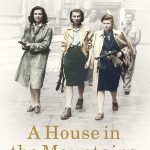Disclosure : This site contains affiliate links to products. We may receive a commission for purchases made through these links.
Charles Dickens and the House of Fallen Women
London in Charles Dickens`s time was a city of great contrast. The affluent and middle classes enjoyed a comfortable existence but for the poor, life was cruel and harsh, the more so for girls and young women. Many characters in Dickens`s classic novels exemplify this: Little Em`ly in David Copperfield is perhaps the best known. Dickens was clearly troubled by what he saw and in autumn 1847 established Urania Cottage in Shepherd`s Bush as a hostel for destitute young women. The residents came from prisons, workhouses, police courts and from the streets of London. They included prostitutes, petty thieves and homeless teenagers. Urania Cottage was financed by the millionairess Angela Burdett Coutts of the banking family and details of the residents, its routines and its dramas are brought to life in the treasure-trove of letters written to her by Dickens. The aims of Urania Cottage were simple – to rehabilitate the residents and prepare them for a normal life as domestic servants in Britain`s expanding colonies – Australia chiefly but some went to Canada and South Africa.Charles Dickens and the House of Fallen Women vividly portrays the lot of the poor in mid-nineteenth century London and some of the people who were moved to help. Whatever his motives Charles Dickens was one of them. Jenny Hartley`s meticulous research has revealed the identities of many of the residents of Urania Cottage and how they fared later in life. The book is at once moving and dramatic – life at the cottage didn`t always run smoothly – and shows that with help, even the most deprived people can recover.




































































